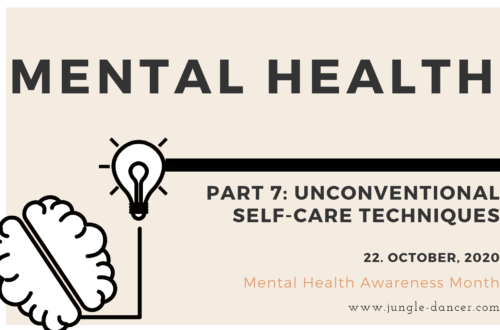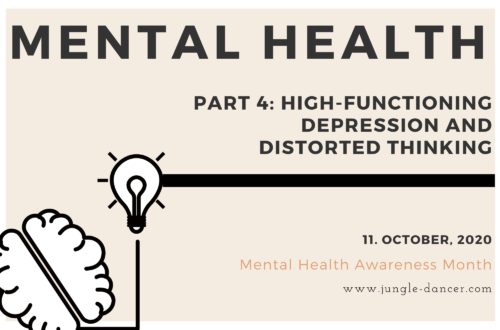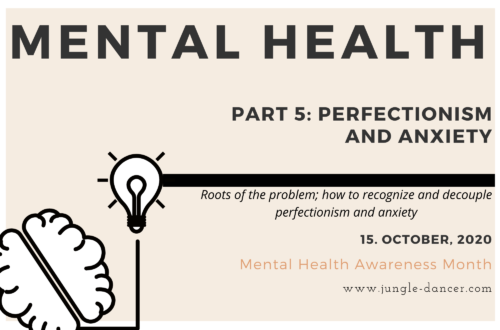
Fake positivity is doing us more harm, than good
Can anyone tell me: when did we start preferring fake positivity over genuine emotional expression?
Stay positive. Be happy. Everything happens for a reason. It could be so much worse. Treating myself to forget I had a shitty day. Enjoying every small pleasure that life has to offer. Positive vibes only guys!
These sentences are everywhere. Now is the era of toxic positivism. We see picture-perfect lives on social media; people who practice “self-acceptance” and “total gratitude”, yet they seek external gratification through social media channels; and an absolute obsession with quotes on positivism. This is all seemingly harmless, except that is has now turned into a mass denial that life is not all about rainbows and unicorns.
Think of denial as a self-preservation technique. We spend so much effort in denying both our past and present negative emotions because they are simply too overwhelming. Too painful to deal with. Thus, it is way easier to deny the burdens and focus on fake positivism, keeping busy, or simply ignoring the core issue.
Interestingly enough, we adopt the same technique when we talk to other people as well. Instead of motivating them to display emotional honesty, we consciously encourage them to negate the existence of their negative emotions. Naturally, we have good intentions. We hope that this might help them on the long run. We tell them “to look on the bright side”; or, that “everything happens for a reason”. Or, to be grateful and to focus on the great things in their life. And, my favorite of it all: “do you know how many people live worse life than yours”?
I do know. Yet, that knowledge does not make my negative emotions and daily burdens any less relevant, valid, or important.
We spit these words without giving them a second thought even when we are talking to people who are experiencing serious emotional distress. People who are ill, people who have lost a family member, or people who have lost their home or job. Does anyone honestly believe that fake positivity can help these people?
The two faces of toxic positivity
Thus, I think that fake positivity should be tackled from two points of view. The first one is our own introspective point of view. This is when we negate our negative emotions and turn to fake positivity. The second one is when we adopt the role of a listener and try to cheer up our loved ones with fake positivity.
In this article, I will try to address both of these by structuring the article in the following way:
- The dangers of fake positivity;
- Emotional agility and the importance of acknowledging negativity;
- Fake positivity vs. how to be how to be brave in the face of overwhelming anxiety and pain;
- Non-toxic acceptance and abandoning fake positivity: a listener’s guide.
1. The dangers of fake positivity
My grandmother always likes to say that we all carry a mountain on our shoulders and that each mountain has its weight. To negate the existence of this emotional burden is to negate vital aspects of our existence.
Fake positivity is causing us to feel desperate for not being heard; guilty for feeling bad or unhappy in a World where everyone is so “content”; and finally, ashamed of bothering our close friends with something so “irrelevant”.
The truth is: there is no point in escaping negativity. Anything worth exploring, doing, or achieving will probably come with a certain amount of discomfort. Instead of denying the discomfort, a healthier approach is to develop understanding of our triggers, emotional responses, and behavior.
Focusing on fake positivity poses the danger of turning off your internal compass. Think about this: why do some thoughts or experience cause an absolute discomfort, but others do not?
Feelings like disappointment, embarrassment, irritation, resentment, anger, jealousy, and fear… are actually very clear moments that teach us where it is that we’re holding back. They’re like messengers that tell us, with terrifying clarity, exactly where we’re stuck. – Pema Chödrön
Therefore, although extremely unpleasant and often painful to deal with, your negative emotions and experiences allow you to grow. By consciously accepting and addressing your wounds, you allow yourself to make progress, to understand why you are stuck, and finally – with time, heal.
The first step is simply saying: it is fine to struggle. It is fine to feel pain, anger, disappointment, sadness and three billion other spectra of negative emotions. Moreover, embracing these emotions, together with the good ones, and anything in between, is what helps us build the emotional intelligence and emotional agility that can carry us through life in the healthiest possible way.
2. Emotional agility and the importance of acknowledging negativity
Susan David, the author of the book “Emotional Agility“, says:
Emotional agility is the ability to be with your emotions with curiosity, compassion, and especially the courage to take values-connected steps.
In a way, emotional agility provides us with the capacity to deal with the world as it is, not as our fantasies would like it to be. However, obtaining emotional agility is easier said than done and we have emotional rigidity to blame for this. Emotional rigidity is hindering our ability to make progress not only because it prevents us from quickly accepting and adjusting to sudden changes, but also because it prevents us to truly understand and verbalize our emotions.
The emotionally rigid people struggle to develop emotional agility because they polarize their feelings. To the emotionally-rigid person, there is only “I feel sad/bad” or “I feel happy/good”; however, the whole emotional spectrum in between is lost. In addition, the emotionally-rigid person often labels pleasant emotions as “good” and unpleasant emotions as “bad”, wrongly implying that the latter ones are harmful to your well-being.
However, emotional agility is not only to be with your emotions, but also to accurately describe them. This is why emotional rigidity is so dangerous. Often, behind words like “I am lost” or “nothing ever works for me” lies a deeper, more accurate description that our emotional rigidity is denying us access to.
Therefore, labeling our emotions as accurately as possible and acknowledging all the interwoven emotions that lie in the grey zone of the emotional spectrum is the foundation towards building emotional agility and abandoning fake positivity and emotional rigidity. Only then we can make the right decisions for us and truthfully tackle the issue.
Fake positivity vs. how to be brave in the face of overwhelming anxiety and pain
Although it flourished in ancient Greece and Rome, stoicism remains even nowadays incredibly relevant and useful for our struggling time. According to the book “Great Thinkers“, stoicism aimed at teaching people how to be “calm and brave in the face of overwhelming anxiety and pain”.
Stoics especially despised fake positivity. They were opposed to the idea that we should cheer ourselves up with beautiful fairy tales of how something bad won’t happen. Instead, the stoics believed that “anxiety flourishes in the gap between what we fear might, and what we hope could, happen. The larger the gap, the greater will be the mood oscillations.”
One way they suggested to shrink this gap was to systematically dismantle every highly improbable hope and bravely come to terms with the worst possibilities. The stoics believed that only when we accept these fears as likely possible future outcomes, we can actually cope if they come true. They encouraged people to reject fake positivity and embrace their negative emotions; embrace their fears of loosing their family, finances, or social status.
However, not many of us are able to do this. The idea to not only acknowledge the present struggles, but also to accept the possible future struggles is terrifying. And still, turning to fake positivity only amplifies these phobias. It is much healthier to realize that it is only natural to feel stressed, sad, betrayed, disappointed, exhausted, and that sooner or later it is inevitable to feel so, we can then welcome these emotions with certain clarity of mind. If we manage to do this, even for a short while, we will find out that our emotions are only bits of information, not a controlling power over our whole being.
3. Non-toxic acceptance and abandoning fake positivity: a listener’s guide
One behavior that I often notice when people start to share their burdens is that the listener often rushes towards giving advice. We are, by nature, problem solvers. Sometimes, however, there is nothing we can do about these emotions except acknowledge them.
Most of all, sometimes people just want to be heard, not advised or helped. We are constantly bombarded with other people’s opinions regarding our lives, that we simply lack the time to say “it is as it is and that’s it”.
If a loved one ever approaches you, keep in mind that we are best helping our family and friends when we listen to them non-judgmentally and give non-toxic validation of their emotions. To not sound so abstract, I am sharing some examples how you can do that:
| Fake positivity | Non-toxic acceptance |
| “Don’t bother with that, it will pass.” | “Please describe what you are feeling. I am listening without judging you.” |
| “Stay positive, do not worry.” | “What are you worrying about?” |
| “Everything will work out in the end.” | “What are you stuck on at the moment? How do you fear this situation will develop?” |
| “Everything happens for a reason.” | “What do you think happened? How did you come to be in this situation? What do you fear will happen next?” |
| “Positive vibes only.” | “I am here to hear it all: the good, the bad, and the ugly. You do not have to pretend in front of me.” |
| “Delete negativity, it is harmful.” | “Please understand that even though suffering in life is unavoidable, suffering alone is optional.” |
| “Look on the bright side, this is not that bad.” | “This feels awful for you. Your feelings are valid.” |
| “It could be way worse.” | “This feels awful for you. Your feelings are valid and you do not need to justify yourself for them. Also, there is no need to make excuses or blame yourself for feeling this way.” |
Final words
Contrary to popular belief, acknowledging and accepting our negative emotions will not make us unhappy. In the long run, it will help us develop emotional agility that will enable us to deal with whatever life throws at us.
Keep in mind that the first step is rejecting fake positivity is self-knowledge and the accurate description of your feelings. Try to drift away from emotional rigidity and polarizing your feelings as merely “good” or “bad”. Finally, embrace Seneca’s notion that “to reduce your worry, you must assume that what you fear may happen is certainly going to happen” in order to not only go through present hardship with certain clarity of mind, but also to be prepared for the challenges that the future will certainly bring.
Last, but not least, since I am a huge fan of philosophical talk on emotional maturity and emotional intelligence in the context of mental health, I have also created a “Meaningful and Focused December” calendar for you guys. Grab it from the pop-up on my blog and let me know what you think about it, as well as what your thoughts on fake positivity are.






3 Comments
CHRISTINE C
I completely agree with you about how critical this issue is. I know that other cultures deal with this better than the US – it feels like no one knows how to deal with conflict here! Your replacement phrases are really good! I shared this on Twitter because I wish we all talked about this more.
Looking forward to more content!
Ivona Kafedjiska
Dear Christine, thank you so much for your kind words. I am sad to hear how it is in the US, but trust me, I think speaking openly about our negative emotions is still a huge taboo topic in the (western) world. We can only hope that with time this will change and that people will learn how to accept their negative emotions too and share them without fear, guild or shame.
Wellbeing 365
This is such an interesting take, thank you for sharing this.